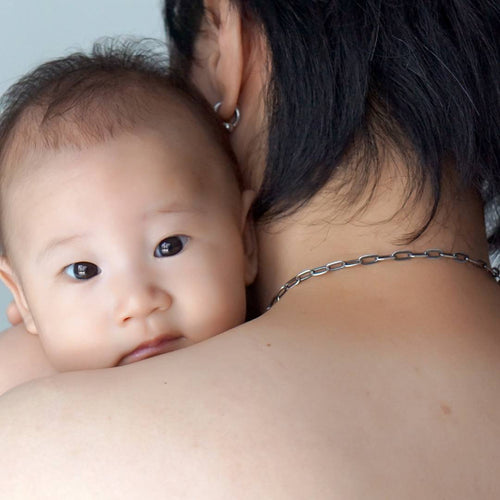Following last week’s beginner tips on nappy changing, we’re going to have a quick look at another necessity of new babyhood – burping. As adults, it seems an easy thing to do, but babies do need our help in those early months with burping out any air they swallow. So, let’s take a quick, non-exhaustive look at why you might need to burp your baby, as well as some of the ways you can go about it!
Why do we need to burp babies?
It’s not uncommon for babies to swallow air while they feed. A newborn’s stomach is tiny – at birth, it is roughly the size of a marble, and by ten days, it’ll be nearer the size of an egg (incidentally, this is why newborns need feeding so frequently!). Therefore, swallowing air along with their milk can lead to a lot of discomfort. You know when you eat too fast or drink a lot of carbonated beverages and end up with a sore stomach? It’s the same for babies, only it’s more difficult for them to be able to do anything about it. Their muscles are often not strong enough to force that air out, so we need to give them a helping hand. This isn’t a permanent thing, though; most babies will usually only need help for the first few months – and not all babies will need to be burped. When and how to do this will vary from baby to baby.
When should I burp my child?
Again, this will differ between babies. Some babies need to be burped after every feed. Some might need to have a burp mid-feed before they can carry on. Some might only need a burp after a big feed, or not at all. For most, though, directly after a feed is a good time to try and get rid of that air they’ve managed to take in with their milk. There are signs babies may show when they’re feeling uncomfortable; this might include being fussier than usual or squirming. They might pull away if they need a burp mid-feed; after a feed, they may arch their back or clench their fists. As time passes, you’ll learn your baby’s specific indicators.
How do I burp my baby?
There are three main burping techniques that are recommended for most babies; you can ask your midwife or other health professional to teach you exactly how to do each of these.

Over the shoulder: this is the most well-known of these techniques and probably the one you’re most familiar with. Hold your baby upright with their chin on your shoulder, making sure they’re properly supported. Gently pat and rub their back with one hand. Some parents find it helpful to walk while they’re doing this – just make sure the floor is clear of anything you might trip on. As it is quite common for babies to bring up a little milk when they burp, it can often be a good idea to use a burp cloth on your shoulder before doing this to protect your clothes from milk. Haakaa’s Cotton Cloth Wipes can be an excellent option for this!

Sitting on your lap: sit your baby up on your lap. Put one hand flat against their chest, supporting their head by their chin and jaw – make sure you aren’t pressing against their throat. Keep their back straight and lean them forward (just slightly!), rubbing their back with your other hand.

Lying on your lap: lie your little one on their tummy across your lap, supporting their head by the chin and avoiding any pressure on the throat (as with the sitting upright on your lap technique). Pat or rub their back as usual.
Take advantage of having people around you in those early days—midwife, nurse, ob-gyn or any of the other fantastic maternity professionals who have helped you— who can teach you how to properly use these techniques so you feel comfortable and confident using them when needed. There are some handy little things to keep in mind, though. First up, be gentle. Whichever technique you’re using, you’ll need to be sure to support your baby, especially their head, and avoid putting any pressure on their throat. Likewise, don’t put too much pressure on their tummy or pat their back too hard. You may also like to try each of these burping positions, as some babies might prefer one over the other – and they can even change their preferences from one day to the next!
Burping your baby is a skill you’ll have to learn, just as they’ll have to learn to do it themselves. As your child grows older and their muscles develop, there’ll be less and less need for you to actively burp them, but for those beginning months they’ll need your help. Learn the signs and learn each of the techniques so you can get through each day. By doing so, you’ll help your little one feel more comfortable and, with luck, cut down on at least one source of fussiness! As usual, though, if you have any concerns or questions about your baby, ask your healthcare professional.

